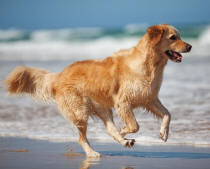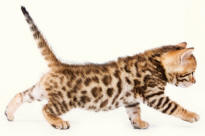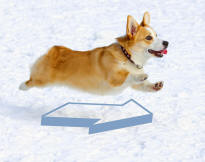Glossary

Gait
The pattern of movement of animals during (terrestrial) locomotion.
Gaits used by cats and dogs include the walk, the amble, the pace, the trot, the canter and the gallop.
Gaits used by cats and dogs include the walk, the amble, the pace, the trot, the canter and the gallop.
Symmetrical Gait
A pattern of gait in which footfalls are evenly spread in time.
The footfall pattern to the left of the central line of a trail does not mirror the pattern to the right, and vice versa.
The footfall pattern to the left of the central line of a trail does not mirror the pattern to the right, and vice versa.
Footfall
Footsteps, the setting down of a foot.
The pattern of footfall constitutes the gait.

The pattern of footfall constitutes the gait.

Central Line
An imaginary line along the direction of travel.


Gallop
The fastest gait of an animal.
There are two kinds of gallop: the supported gallop (canter) and the suspended gallop.
All four feet leave the ground simultaneously during the suspended gallop.
There are two kinds of gallop: the supported gallop (canter) and the suspended gallop.
All four feet leave the ground simultaneously during the suspended gallop.
Single Suspension Gallop
An asymmetrical, four-beat gait, in which there is just one suspension phase, which occurs when all four limbs are airborne, gathered under the body.
All four limbs contact the ground separately, none in unison.
All four limbs contact the ground separately, none in unison.
Ipsilateral
Relating to the same side of the body.
For example, ipsilateral limbs are limbs that are on the same side of the body.
For example, ipsilateral limbs are limbs that are on the same side of the body.
Contralateral
Relating to the opposite side of the body.
For example, diagonally contralateral limbs are limbs on diagonally opposite sides of the body.
For example, diagonally contralateral limbs are limbs on diagonally opposite sides of the body.
Title9
text
hover over shaded words to reveal more
Asymmetrical (Gait)
A gait in which footfalls are unevenly spread in time.
The footfall pattern to the left of the central line of a trail does not mirror the pattern to the right, and vice versa.
Faster gaits (canter and gallop) are asymmetrical.
Cf. symmetrical gaits






